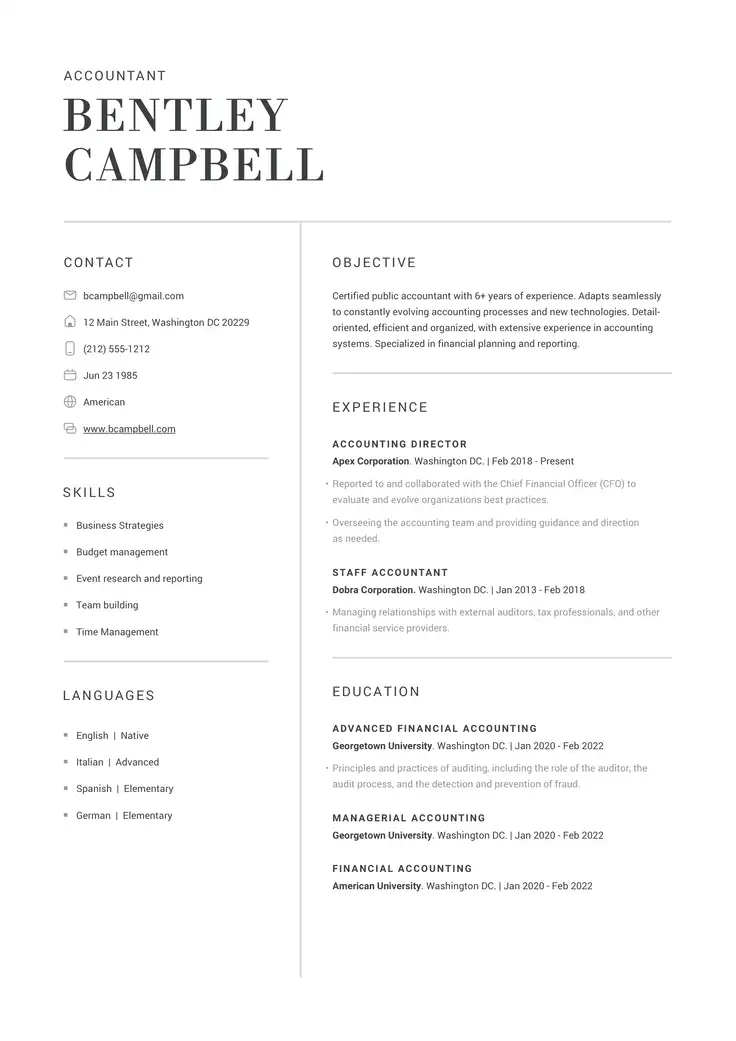- What Is the Purpose of Job Shadowing?
- How Does This Kind of On-The-Job Training Work?
- Examples of Job Shadowing
- Job Shadowing vs. Internship
- How To Find Job Shadowing Opportunities
- How To Get the Most Out of Job Shadowing
- What Are the Benefits of Job Shadowing?
- How To Prepare for Job Shadowing
- Questions to Ask When Job Shadowing
- Job Shadowing Tips for Interns and Employees
If you’re looking for a one-on-one learning opportunity that can prove to be highly effective for training, offering a comprehensive, 360° perspective of a role job shadowing can be the perfect experience for you.
But job shadowing raises some interesting questions, and you may be asking yourself, “Do people get paid for job shadowing?” or “What are the advantages and disadvantages of job shadowing?”
That’s why, in this article, we provide you with answers to the following:
- What is a job shadow, and why it’s done
- How job shadowing works
- Differences between job shadowing and internships
- How to find opportunities quickly
We also look at how to prepare for job shadowing and some benefits, like being able to include the experience on your application with the help of our AI resume builder.
What Is the Purpose of Job Shadowing?
What is job shadowing? Well, to provide a job shadowing definition would be to label it as a a unique form of on-the-job training where an employee learns from a more experienced coworker by closely observing them in action.
Job shadowing serves as an educational tool for interns, students, or employees eager to gain firsthand knowledge about a job or industry in which they lack prior experience. It gives you a more intimate grasp of a job’s nature compared to simply reading job descriptions or conducting informal interviews.
High school and college students or recent graduates should consider shadowing to gain a better understanding of their specific area of study. Equally, those wanting to learn about a specific career through hands-on experience can greatly benefit from this type of training.
Trainees can immerse themselves in the nitty-gritty of a profession and step into the role of the individual they’re shadowing. This approach allows them to develop empathy, envisioning their actions, reactions, and emotional responses in various work scenarios.
How Does This Kind of On-The-Job Training Work?
While each job shadowing experience may vary based on the nature of the job, the specific training goals, and other considerations, it typically entails closely observing and tracking an employee during their regular work routines.
However, many choose to take more of a hands-on approach during training and ask to do some of the tasks under supervision.
Another aspect of job shadowing is its focus on skill development and transfer. Depending on the length of your shadowing experience, you’re likely to pick up some of the essential skills required for the job.
Examples of Job Shadowing
Job shadowing can be very different depending on the role and sector. Below are two examples of job shadowing experiences that could offer unique perspectives:
- Technology: You can learn about the latest industry trends, tools, AI skills, and technologies used in the field.
- Creative: Spend time with a professional in the creative field, such as a designer or art director, to observe their day-to-day tasks and see how they bring projects to life. Learn about their creative process, the tools they use, and the abilities required for success.
By pursuing various job shadowing opportunities in different industries and roles, you can gain a better understanding of the possibilities available to you.
Job Shadowing vs. Internship
The information below offers a comparative look at job shadowing vs internships:
Job Shadowing 📋
Duration: Typically short-term, ranging from a day to a week.
Involvement: Observational, minimal hands-on work involved.
Learning Approach: Learning through observation and mentor guidance.
Goal: Provides a snapshot of a job or profession.
If you are short on time to learn what a job entails, work shadowing might be the right choice, even though it is a more ‘passive’ experience.
Internship 💻
Duration: Usually long-term, spanning several weeks or months.
Involvement: Active participation and significant hands-on work.
Learning Approach: Learning through executing tasks and receiving feedback.
Goal: Offers experience in a specific role. Tasks can be repetitive and of low value to the intern.
How To Find Job Shadowing Opportunities
Knowing where to look and who to contact for a shadowing opportunity is probably more straightforward than you thought. Here’s how you can find these opportunities:
- Check out college career centers: Your university’s career center often has connections with alumni and local businesses and can help you get in touch with people who might be open to having you shadow them.
- Use LinkedIn and social media: Reach out to professionals on LinkedIn or through their company’s social media pages.
- Ask around in your network: Talk to family, friends, or professors to see if they know anyone who might let you shadow them for a day or two.
When you’re ready to reach out, send an email. Be clear about what you’re asking for and when you’re available. Share why you’re interested in their work and suggest some dates that might work.
Subject: Interested in job shadowing opportunity
Hi [Name],
I hope you’re doing well. My name is Emily Johnson, and I recently graduated from XYZ University with a degree in Marketing. I’m really interested in learning more about digital Marketing, and I was wondering if you might be open to letting me shadow you for a day. I’m available next week on Tuesday or Thursday, and I think this experience could help me figure out my next steps. Please let me know if this could work for you.
Thanks so much for considering this!
Best,
Emily Johnson
How To Get the Most Out of Job Shadowing
Job shadowing is an incredible opportunity for individuals to gain valuable insights and firsthand experience in a specific job role. However, understanding the process involved in job shadowing is essential to make the most of it.
When you begin your shadowing experience, it is important to:
- Set clear expectations with the person you will be shadowing.
- Understand their preferences and boundaries, and ensure you follow any guidelines or instructions provided.
- Ask thoughtful questions, take notes, and be engaged in the tasks or activities you are involved in.
It’s worth noting that the specific steps involved in job shadowing may vary depending on the industry, organization, or individual you are shadowing. It’s important to be flexible and adapt to the expectations of the mentor you are shadowing.
What Are the Benefits of Job Shadowing?
While there are certain drawbacks, such as not being as hands on as in an internship and likely will not getting paid, the importance of job shadowing should not be understated. According to a Gallup survey, “opportunities to learn and grow” ranks among the top three factors for retaining millennial employees.
This trend resonates in other research as well, including LinkedIn’s Workplace Learning Report. The study reveals some key benefits of shadowing, such as:
- Career development: Organizations with strong career development programs, including job shadowing, see better internal mobility and leadership growth, with 40% of companies having mature initiatives in this area.
- Supports Gen Z needs: 53% of Gen Z employees believe learning helps them explore career paths, compared to 37% of older generations.
- Boosts internal mobility: Companies that encourage internal mobility through job shadowing see higher retention rates.
By providing a glimpse into the daily routine of a professional, job shadowing can assist you in determining whether you wish to follow that path as a career choice. It can also help you see if you have the required set of hard and soft skills to do the job.
Job shadowing can also serve as an excellent opportunity for networking within the industry you are currently engaged in or aspire to join. If you’re just beginning your career, making professional connections is essential.
How To Prepare for Job Shadowing
Taking the time to prepare for a job shadowing experience beforehand is well worth it.
Take a look at the following tips to help you get ready:
- Conduct research: Before you start, take the time to research the company, its industry, and the specific role. Familiarize yourself with the company’s mission, vision, and values, as well as its competitors and recent news or developments.
- Identify learning objectives: Set clear learning objectives. Reflect on what you hope to gain from the experience and what specific skills or knowledge you want to acquire.
- Dress professionally: Review the company’s dress code and select an outfit that matches the professional environment.
Questions to Ask When Job Shadowing
As mentioned in the previous section, asking your mentor thoughtful questions is extremely important.
Consider the following job-shadowing questions:
What are your day-to-day responsibilities?
Understanding the routine and demands of the job can give you a comprehensive understanding of what it entails.
What specific skills are necessary to succeed in this role?
Ask which skills are critical for the position and how you could develop and refine them. These abilities can help you create meaningful learning opportunities and attain a goal-oriented approach.
What are some of the most challenging and rewarding aspects of this job?
Their experiences can provide insight into the potential ups and downs of the field.
What is the company culture like?
Understanding the company culture can help you determine whether it’s a good fit for your personality and work style.
How do you stay up-to-date with industry changes?
How do they stay informed about industry updates, trends, and new approaches? Being aware of the latest developments in the industry can be invaluable information for your continued growth.
What advice do you have for someone interested in this role?
This question helps you set career goals and develop an action plan to accomplish them.
Asking relevant questions demonstrates your genuine interest in the role. Curiosity sets you up for your future career path.
Job Shadowing Tips for Interns and Employees
As an intern or employee, there are several things you can do to get the most out of your training:
- Focus on making a good impression: The way you interact with the people you meet will determine how much you’re going to get out of the job shadowing experience. Politely introduce yourself to everyone you meet, explain why you’re there, and keep eye contact. Send your mentor a personal thank you note or email to make a strong final impression.
- Be observant and engaged: During your job shadowing, be observant and engaged in your surroundings. Pay close attention to how tasks are performed, how employees interact, and the overall work environment.
- Seek feedback and guidance: Take the opportunity to seek feedback and guidance from the professionals you are shadowing. Ask for constructive criticism and suggestions for improvement.
- Network and build relationships: Job shadowing provides an excellent opportunity to expand your professional network. Take the time to introduce yourself to others in the company or organization.
- Reflect and apply learnings: Reflect on what you have learned and how you can apply it to your career journey. Assess which skills or knowledge you want to develop further and create an action plan to enhance those areas.
The benefits of job shadowing are many. It is not only about observing and learning. It is also an opportunity to connect with professionals, gain inspiration, and pave the way for future career success.
Embrace the job shadowing with enthusiasm and an open mind to make the most of this valuable opportunity.
Related Blog





